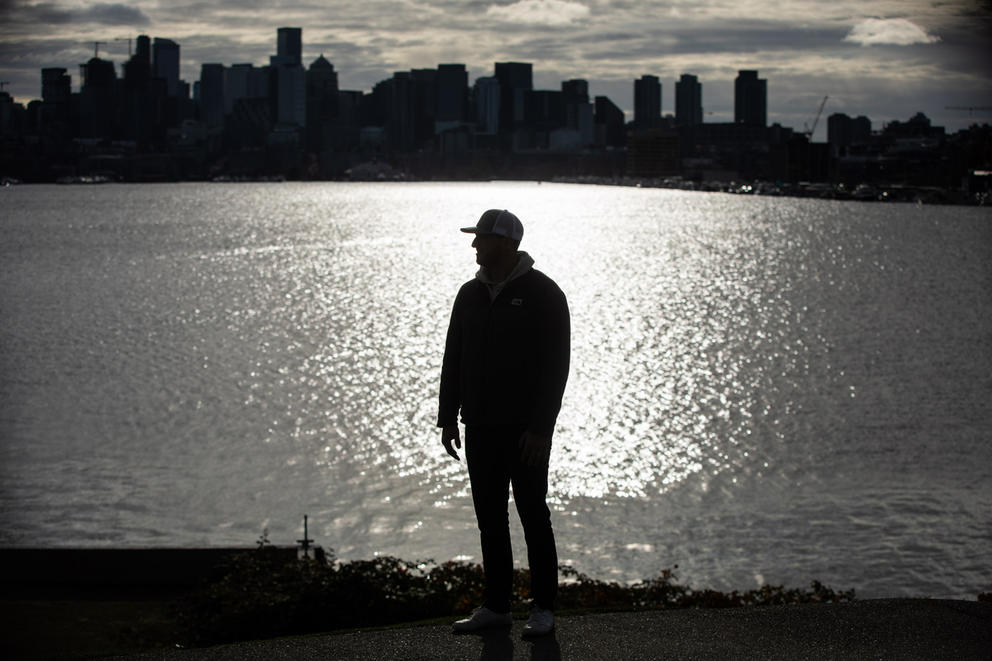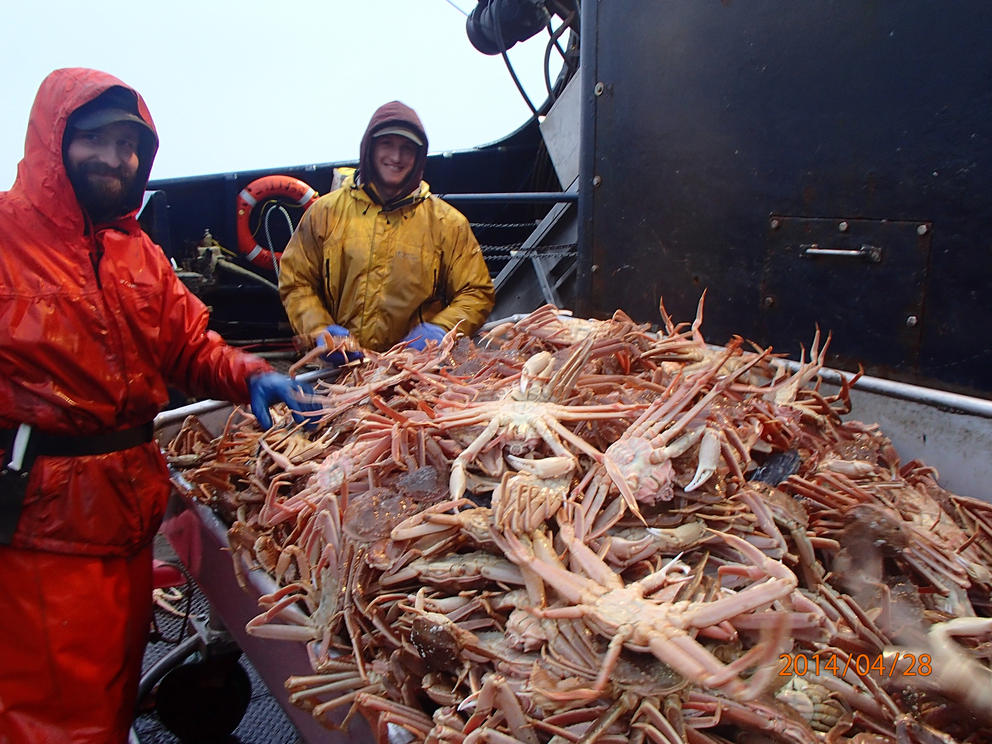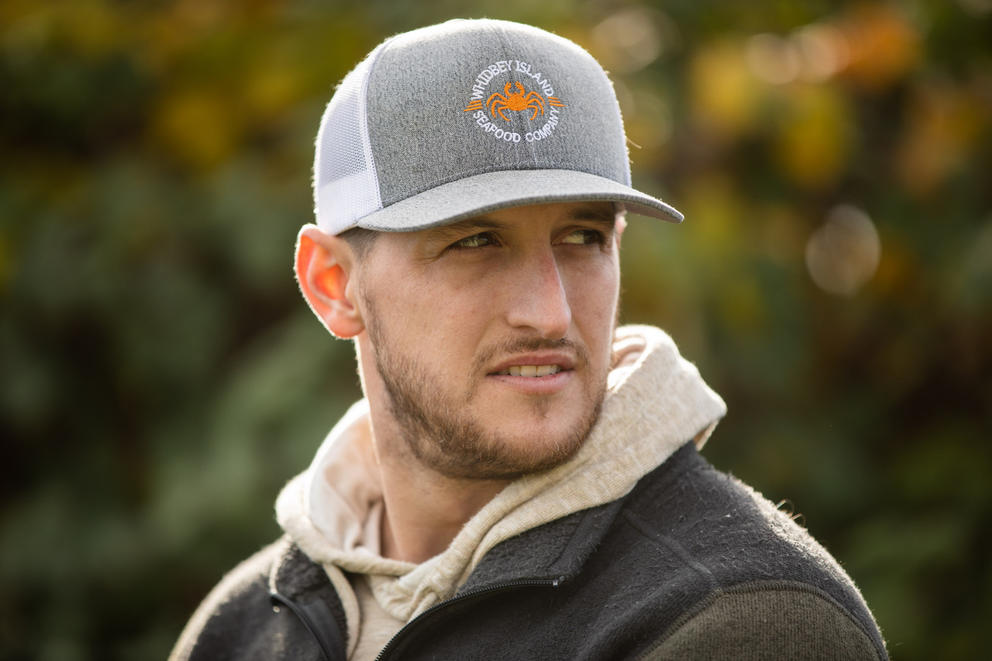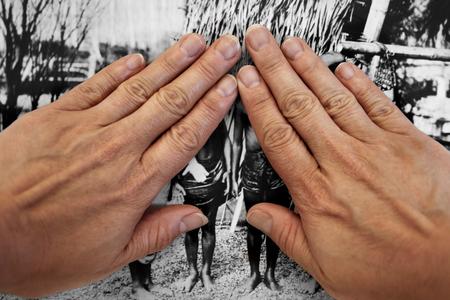Alaskan crabbing is not for the faint of heart. The northeastern Bering Sea, home of the snow crab, is covered in sea ice from November to June. Winter storms, powerful tidal currents and 40-foot swells overlap hazardously with the crabbing season, but crews brave enough to work one of the country’s most dangerous professions can make tens of thousands of dollars in just a few weeks.
In the past, the payout was worth the risk. But Alaskan waters once teeming with king and snow crab now sustain a fraction of the catch they used to. In 1991, the peak of the Bering Sea snow crab fishery, captains harvested more than 328 million pounds of crab, according to data from the National Marine Fishery Service. But a catch that was worth $164 million in its heyday — more than $358 million in today’s dollars — has now fallen to zero.
“No one thought snow crab would disappear. Nobody. Even a year ago, we never would have expected a canceled season for snow crab,” said Adam Hosmer, one of the Baranof’s first mates. “[T]hey used to just be a dime a dozen. If you ask any of the old-timers, they used to be everywhere. Everywhere.”
For the first time in the fishery’s 40-year history, population collapse led the Alaska Department of Fish and Game to cancel the 2022-2023 snow crab season. As a result, declining numbers of snow crab are increasing ecological pressure on fishery managers and economic stress on crabbers already gutted by years of dwindling harvests.
What happens to eastern Bering Sea crabs will have ripple effects in Washington, not just Alaska. The two northwesternmost states are connected by seafood: Since 2006, 57% of snow crab fleet vessels have been registered to Washington addresses. During the 2020-2021 season, 27 of that 60-boat fleet were registered in the Seattle metropolitan area. That same year, Bering Sea snow crabbing generated $62.6 million of revenue across King, Pierce and Snohomish counties and another $6.8 million elsewhere in Washington, according to a rebuilding plan drafted by the North Pacific Fishery Management Council.
In its October announcement, the Alaskan game department also canceled the Bristol Bay red king crab harvest for the second year in a row. Compounded with several poor harvests, the canceled crabbing seasons are estimated to cost the industry more than $287 million over the past two years, according to the Alaska Bering Sea Crabbers, a Seattle-based trade organization.
Snow crab typically makes up the lion’s share of the Bering Sea crab harvest, according to Cory Lescher, a science advisor for the Alaska Bering Sea Crabbers.
“It's the meat and potatoes of the three (red king crab, snow crab, bairdi) primary crab fisheries,” he wrote in an email. “So when that season is closed, in tandem with red king crab, the situation becomes extremely dire.”
Despite the grave circumstances, economic relief is far off for captains and their crews. Disasters within fisheries — the specific area and species being caught — are declared by the U.S. Secretary of Commerce, and only after that determination can Congress begin to appropriate bailout funds. In October, Alaska Gov. Mike Dunleavy requested a disaster declaration for the 2022-23 snow crab season, but the fleet likely won’t see that money for years. Crabbers are still waiting for more than $12.9 million in disaster funds appropriated after the collapse of the 2019-20 bairdi crab season, according to Lescher.
Until this year’s canceled harvest, the Seattle-based Baranof supplied all of the crab catch sold by the Hosmer brothers’ retail business, the Whidbey Island Seafood Company. The Baranof is one of the last independent, at-sea processor/catcher crab boats, though they have diversified into cod over the past decade.
“It’s a hit, but you know, we’ll be able to survive,” said Adam Hosmer. “But there’s a lot of crab boats that are gonna struggle.”
Sea changes in the crabbing industry
Crab was the Baranof’s main focus when Chuck began in the late ‘70s, but in recent years, it’s made up just 30% of the crew’s catch. The season for bairdi crab, just 3% of the Baranof’s catch, is expected to open on Jan. 15. But with a limit of 30 crab pots per boat, it isn’t worth the time and effort it would take the crew to convert from long-line gear, used to fish for cod, to crabbing.
Last year the Baranof went out once with a single load of 175 crab pots. In the 1980s and ‘90s, Chuck said he and his crew would drop more than 500 crab pots across the Bering Sea, taking two or three trips to land them all onshore in a mad rush.
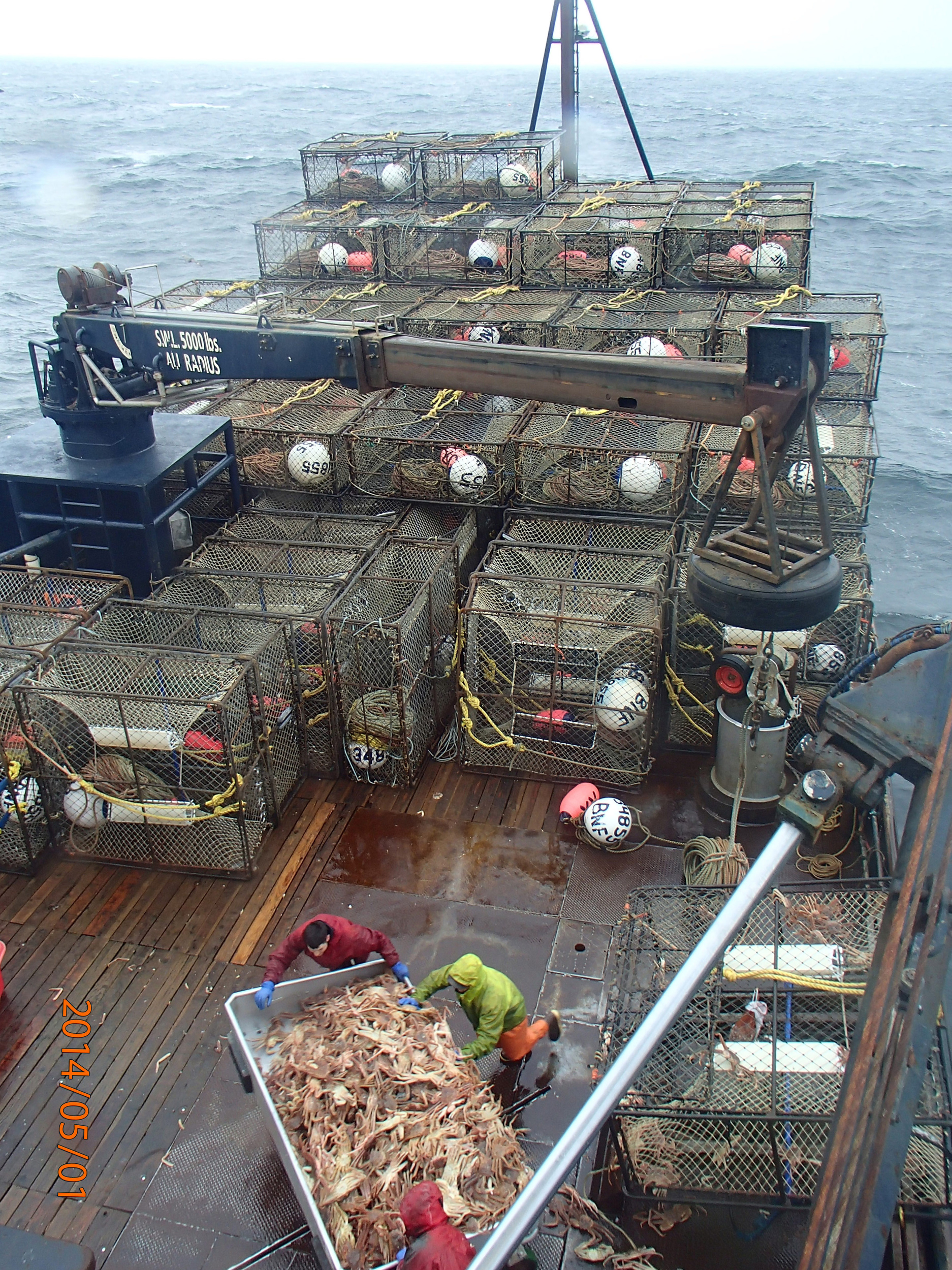
That all changed in 2005, when the Alaskan crabbing industry launched a rationalization program to reduce the number of deaths at sea and address management issues associated with the more dangerous free-for-all system. The program now limits each boat based on their historical catches, ending the so-called “race for fish.”
The new system was safer but brought its own host of challenges, including a significantly smaller fleet. Just 78 boats fished for crab in 2006, the first full year under the rationalization program — a 70% decrease from the high of 272 boats in 1994, according to regional fishery management data. Last winter, the number fell to 42 boats.
More than 9 billion snow crabs unaccounted for
Four years ago, few would have envisioned the current state of the snow crab fishery. In summer 2018, the annual Bering Sea trawl survey estimated over 11.7 billion snow crabs, with a record 8.3 billion juveniles — the largest reported cohort of baby snow crab researchers had ever seen. By 2022, the total population fell to less than two billion.
“To my knowledge, there’s not another stock that has experienced a population-wide collapse to the magnitude that snow crab has,” said Erin Fedewa, an Alaska-based National Marine Fishery Service biologist who worked on this summer’s survey.
While their vast, frigid habitat makes snow crabs difficult to study, the Bering Sea ice controls a crucial component of the ecosystem, according to Fedewa. When the ice melts in summer, baby snow crabs hide from predators in the cold water that pools on the seafloor. But as the seasonal ice cover shrinks due to climate change, so does the extent of the cold pool, likely leaving juvenile crabs vulnerable to predators such as cod.
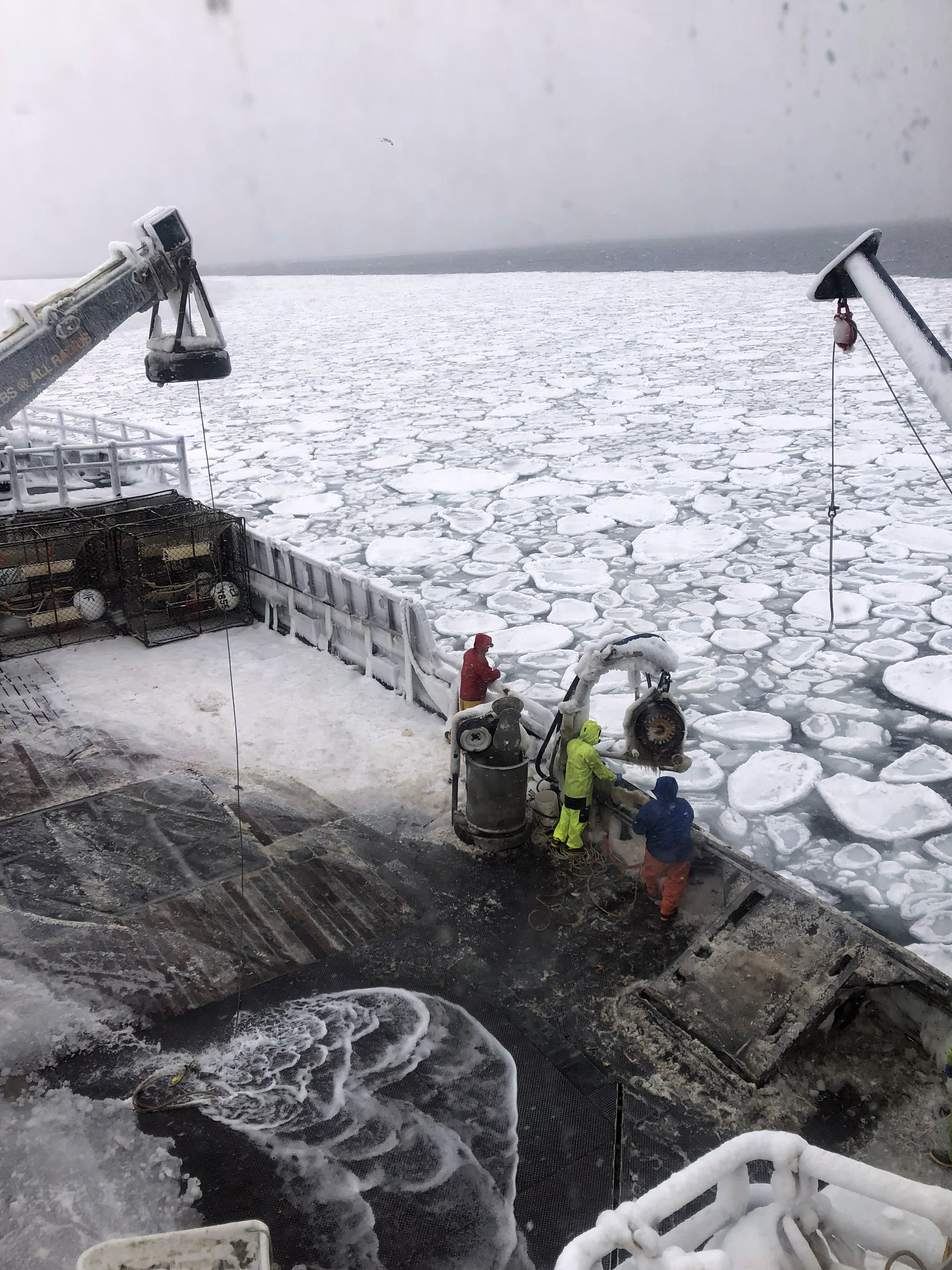
While environmental pressures like increased predation also work against crab stocks, more direct effects of climate change are already wreaking havoc on the subarctic ecosystem. The most recent snow crab die-off was likely caused by a 2019 heat wave that rolled through the North Pacific and decimated the previous year’s record population of juveniles, according to the National Marine Fisheries Service.
As sea ice continues to melt, the thermal barriers that once protected juvenile snow crabs are dissolving. And as climate change increasingly threatens the subarctic ecosystem, those who spend their lives fishing for crab say their catch is fleeing north into the Arctic.
“We want more explanation, you know?” said Adam Hosmer of the Whidbey Island Seafood Company.
In recent years, king and snow crabbers have been finding catch well past the limits of the annual summer survey, sometimes right up against the Russian boundary of the Bering Sea. Prime fishing locations have also trended northwest since the mid-1970s, as have estimated centers of snow crab abundance according to the National Oceanic and Atmospheric Administration’s 2022 trawl survey. The survey’s boundaries haven’t changed since its inaugural run 50 years ago.
Other well-known Bering Sea crab fisheries have undergone closures, too. The Bristol Bay red king crab season was canceled for several years in the mid-1990s following a steep population decline. The Bristol Bay red king crab fishery peaked in 1980 — the year Chuck Hosmer became captain of the Baranof — but total catch dropped sharply in the following years and has remained low ever since.
These repeated collapses are frustrating for crabbers, who are finding it increasingly difficult to survive in an industry that once sustained their families for decades. Many now worry that, should current trends and the snow crab decline continue, Alaskan waters will no longer support commercial crab fishing.
Some have followed the money into pollock and other trawling industries, which tow nets through the water and along the seafloor and have become the largest commercial fisheries in the U.S., according to the National Marine Fishery Service.
“I chose not to go into trawling,” said Chuck Hosmer, who wasn’t interested in pollock because catching the widely abundant fish “doesn’t take a lot of skill” due to location-tracking and catch-estimating equipment. Crabbers, on the other hand, rely on seasonal knowledge and attention to detail.
“There’s no signals at all for crabbing,” he said. “They don’t show up on the depth finder. It’s all about much [more] subtle nuances.”
In 2004, the U.S. voted in favor of a United Nations resolution calling upon states to take urgent action against environmentally destructive fishing practices, such as bottom trawling. The National Marine Fishery Service imposes regulations — like exclusion zones in waters where crab are known to mate — to minimize the industry’s harmful effects.
But discussions about trawling’s environmental impacts often prompt questions about bycatch and mortality, the crab that die when they’re caught unintentionally in nets or pots. All three can be tricky subjects in the world of commercial fishing.
“We certainly have a handle on the observed mortality, and that’s figured into the mortality of crabs when they set the amount that can be taken,” said Dr. George Hunt, a retired University of Washington marine biology professor who sits on a scientific council that advises the North Pacific Fishery Management Council. “The unobserved mortality is the purple elephant in the room. We don’t know what it is because we don’t observe it.”
Surveying the Bering Sea is expensive and time-consuming. Short of strapping cameras onto fishing gear, there aren’t many ways to study how trawl nets kill crab, according to Hunt. And while snow crab population assessments factor in the trawl bycatch that’s directly observed, crabbers are concerned that more data is needed to fully understand the repetitive cycles of population collapse in the Bering Sea.
While bottom trawlers aren’t allowed in the regions of Bristol Bay where red king crab mate, a North Pacific council report released in April 2022 found that midwater pollock trawlers’ nets drag on the seafloor at least 70% of the time. At a state bycatch review task force meeting in July, the Alaska Bering Sea Crabbers asked researchers to further explore unobserved mortality estimates and recommended that the National Marine Fishery Service require pelagic trawl fisheries, like pollock, to limit their seafloor contact to 10%.
“That was just alarming to people,” said Adam Hosmer. “[Crab are] at their most vulnerable and these fisheries are allowed to operate there. And that’s very frustrating for the directed crab fishery.”

